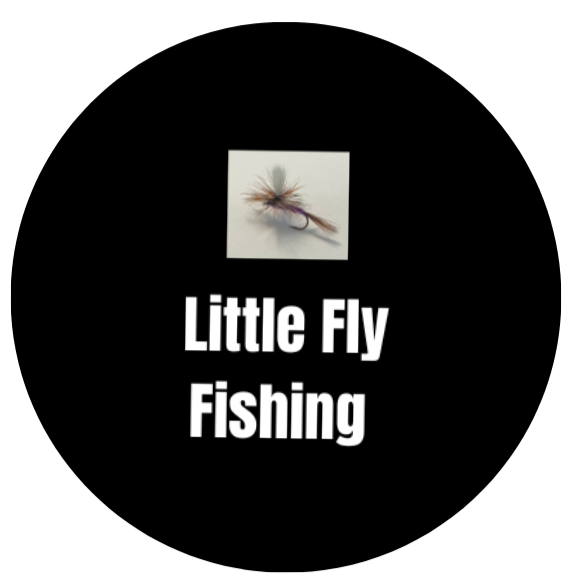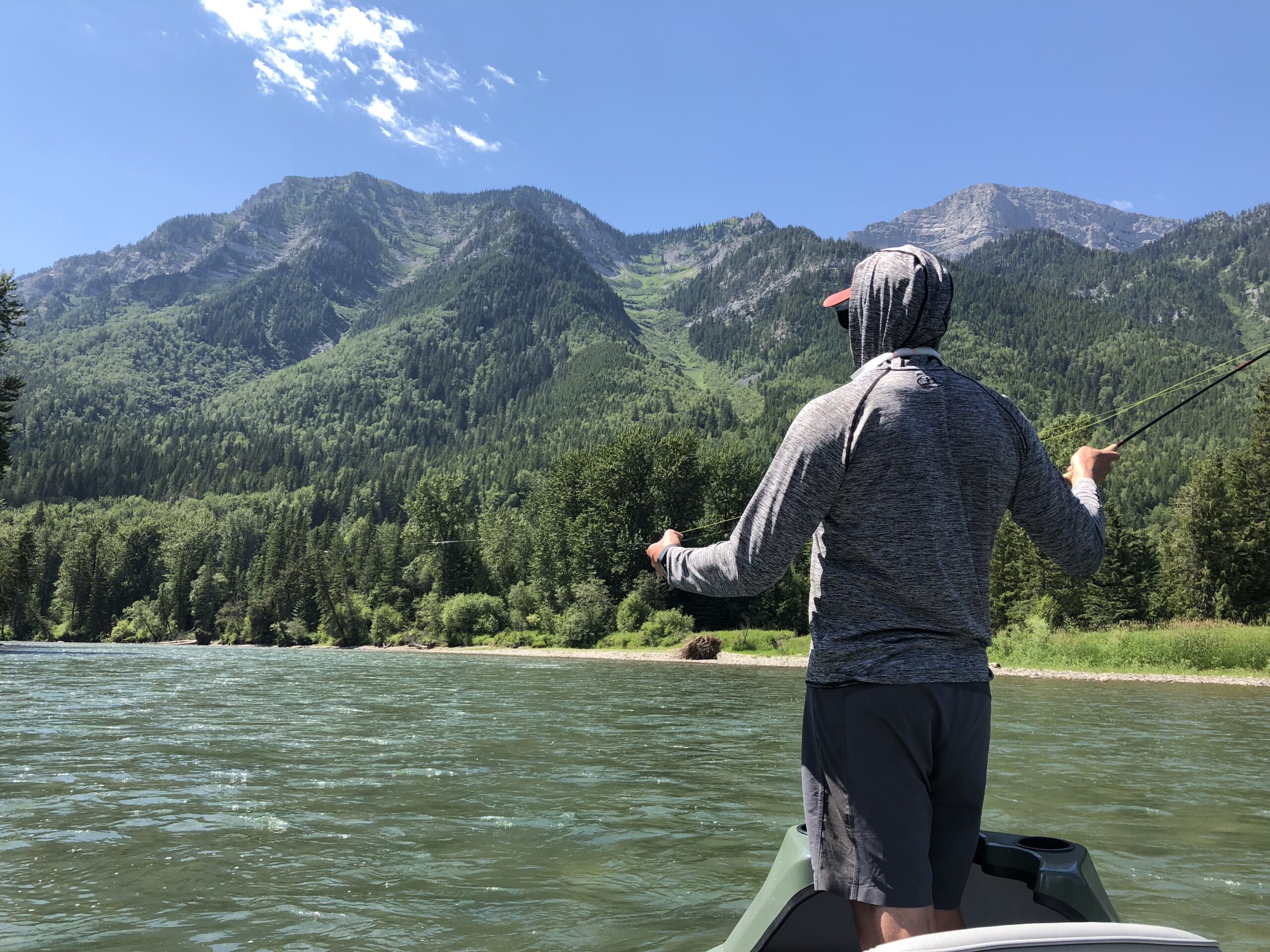Casting like a pro can take years of practice but the basic steps needed to cast well enough to catch a fish can be mastered in an afternoon.
The Basic Fly Cast
Here’s a step-by-step guide to help you achieve a basic fly cast:
1. Position Yourself
Find a comfortable spot along the water’s edge. Stand with your feet shoulder-width apart and relax your shoulders. Keep a slight bend in your knees to maintain balance.
2. Grip the Rod
Hold the fly rod with a relaxed grip. Your hand should be on the handle, with your thumb on top and your index finger extended along the top of the grip. The rest of your fingers should gently curl around the handle.
3. Extend the Line
Let out enough fly line, so you have some to work with but not too much to tangle. The amount will depend on your casting situation, but a good starting point is about 20-30 feet of line beyond the rod tip.
4.Start with the Back Cast
Begin by slowly lifting the rod tip, bringing the line off the water. As you lift the rod, your other hand (the non-dominant one) should be holding the line just above the reel. Keep your wrist supple, and the motion smooth. Alternatively, you can also hold the line with the index finger of your dominant hand leaving your other hand free.
5. Accelerate Smoothly
Once the line is behind you, start the forward cast. The key here is to accelerate smoothly and progressively, using the power of the rod’s flex. Imagine the rod as a spring that you’re loading.
6. Stop and Pause
Just as the rod reaches its maximum flex, abruptly stop it. This sudden stop transfers energy from the rod to the line, propelling it forward. At the same time, your non-dominant hand should release the line.
7. Watch the Line Unroll
Keep your eyes on the line as it unrolls and extends forward. It should create a loop in the air, and ideally, the fly will gently kiss the water’s surface.
8. Follow Through
After the forward cast, let the rod continue to drift forward. This follow-through motion is essential for accuracy. Think of it as a graceful finish to your casting stroke.
Final Thoughts
Once your line is in the water, you can repeat the process as many times as needed, covering different areas of the water to entice those fish.
Remember, the key to an effective fly cast is to use the rod’s natural flex, and keep your movements fluid. It might take some practice to get the timing and rhythm just right, but with time and patience, you’ll be casting like a pro.
If you want to speed up the learning process, the best option is finding someone who is good at fly casting and ask them to teach you. I think it’s easier to learn by watching someone do it then trying to imitate them.
Other Casting Techniques
Here are some effective casting techniques for shorter distances that don’t get as much credit as they should.
The Roll Cast
Roll casting is a fundamental fly casting technique that allows you to cast your fly line when there’s limited space behind you or when you want to make a quick and efficient presentation.
- Begin by stripping the desired length of line off your reel. Let some line out into the water. Hold the rod just above the water’s surface and point it in the direction you want to cast.
- Lift the rod tip, bringing it upward and backward until it forms a roughly vertical position. This motion should be smooth and controlled. You should feel some tension on the rod created by the line dragging through the water.
- As the rod bends and the line is tensioned, use a brisk but controlled forward movement to cast the line. The roll cast is initiated by sweeping the rod forward and slightly downward.
- Just like with traditional casting, you must stop the rod at the end of the forward cast to create a loop in the line. This stopping action should be abrupt but not too forceful. You should now be holding your rod at a 30-45 degree angle.
The Dangle
The dangle can be a very effective presentation technique for small streams. This one is pretty simple.
- Pull out a small amount of line. Usually a little less than your rod length.
- Sneak up as close as you dare to the streambank.
- Reach out with your rod and set your fly on the water.
The Archer
I call this one the archer because it kind of looks like you are drawing a bow string. It won’t get your fly far but sometimes you just need to get a little further than your rod can reach.
- Start by pulling out a little more line than your rod is long.
- Grab your fly with your non-dominant hand. Be careful not to hook your fingers
- Point your rod in the direction you are trying to cast and gently pull the fly back as you push the rod forward. Keep the fly in front of you so you don’t hook your body when you let go.
- Release the fly while keeping your rod aimed at the target.
Hope this post helps you get your fly to a hungry fish!

